Plants, birds, mammals, reptiles, amphibians, fish, fungi, insects, and all the non-human people we divide into biological categories, are never heard. Not because they don’t have voices, but because we don’t understand those voices. Just as in other natural enclaves, conversation in the Amazon rainforest is intense. But we are unable to reach it. Similarly, the hegemony of Western thought, which places humans at the center of the home-planet, hierarchically superior to all its other inhabitants, means these species are considered and treated as inferior, at the disposal of human needs. These needs, in turn, are determined by the same dominant global minority that caused, and continues to cause, the climate crisis. This brutal phenomenon is known as speciesism, a form of racism committed against other species. In the contemporary world, speciesism permits the daily holocaust of cattle, chickens, pigs and other animals, lives produced on a massive scale for slavery and death, and fed in large part by the soy that devastates the forest. In this third part of the series Nature in Power, SUMAÚMA seeks to represent the voices of the non-human people of the forest.
“But how?” you might ask.
In the same way as we believe that a 21st century democracy can only be complete if it embraces the rights of nature, and of nature-peoples. To be considered representative, a democracy must also include non-human people, an inclusion that can and should take place with individuals able to represent these lives in every setting, from parliament to the judiciary.
And that’s what SUMAÚMA has done here.
As we cannot understand these voices, we have invited scientists recognized in their fields to represent several of these species to Brazil’s president-elect Luiz Inácio Lula da Silva, better known as Lula. This attempt at representation is fundamental to SUMAÚMA’s approach.
Thus, on behalf of the non-human people of the Amazon, and through the women and men of science who speak for them here, we invite Lula to listen to and provide a space for these voices within his government. These species are, after all, those most affected by government projects. They are part of the forest, and some have helped plant what we now call the Amazon. All have a function that, through exchanges with other beings, keeps the ecosystem alive and – for now – regulating the planet’s climate.
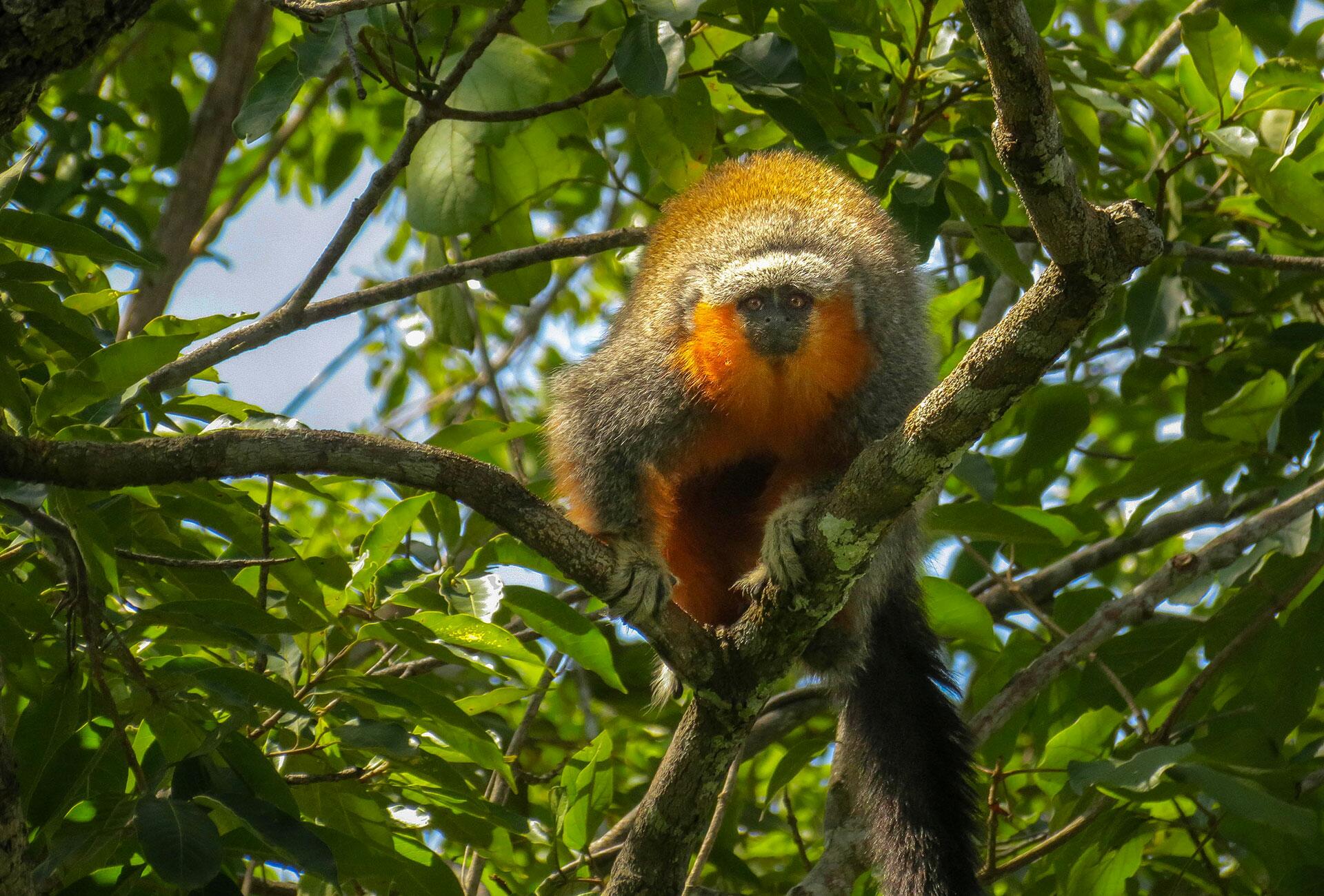
Alta Floresta titi monkey. Photo: Francielly Reis
Monkey – Alta Floresta Titi
Although this small primate has only just been discovered it is already at risk of becoming extinct
My name is Jean Boubli, and I’m a primatologist, and a professor at the University of Salford, in the UK. I represent a species of monkey that I recently discovered in the Amazon biome area of the state of Mato Grosso. We christened it the Alta Floresta zogue-zogue, or the Alta Floresta titi monkey in English. But although this small primate, which weighs about two kilos and has a black tail, a brown back and a very red belly, has only just been discovered, it is already at risk of becoming extinct. The environment where it lives has been fragmented by deforestation. On behalf of this monkey I would like to tell president-elect Lula that the destruction of the forest must stop immediately. And ask that more conservation areas are created in regions threatened by agribusiness, like the home of this monkey.
Alta Floresta is a municipal region in the north of Mato Grosso, right on the border with Pará. On a Google satellite map, the city looks like a chessboard, with neat squares of forest and pasture. This is where this little monkey was found on an expedition by my colleague Rogério Rossi, from Mato Grosso Federal University, who was carrying out an inventory of species in the region. As he isn’t a primatologist, he showed me this new person he’d discovered. Right away, I saw it was a different type of titi monkey to the ones we knew about. Its sister species is the Pará titi monkey, but our genetic analyzes revealed they’d split over one million years ago. It lives in an area of endemism, as we call regions with species that only exist in that place, between two rivers, the Teles Pires and the Juruena, which are sources of the Tapajós River. The fact it was in an area of endemism was further evidence we’d found a unique species.
We still don’t know how many of these monkeys there are. I’m going to Mato Grosso now to carry out the first reconnaissance expedition in the area, and to propose a monitoring plan. Let’s find out how many titi monkeys there are, map the surviving forest fragments and start tracking this population. But we already know 42% of the forest area in their region of endemism has been destroyed, and converted into pasture. And analyzing the habitat of a species is a way of attesting to its conservation status. Because if its home disappears, obviously the population will disappear too.
The International Union for the Conservation of Nature, which created the largest conservation catalog in the world, the Red List of Threatened Species, establishes criteria that help predict the future of each species. We need to consider what the situation will be in three generations, which we estimate will be in 2042 for the Alta Floresta titi monkey. Based on the current deforestation rate, we project that 86% of the monkey’s habitat will be lost in these 20 years, if nothing changes. Almost everything will be gone. That means it is critically endangered.
The Chico Mendes Institute for Biodiversity Conservation has yet to accept the Alta Floresta titi monkey is critically endangered. But what we’ve suffered in the four years of the Bolsonaro government shows the risk exists. And we’re only talking about one species. Imagine all the other non-human peoples that exist in this same area of endemism, species that will disappear before we even find out about them.
We hope president-elect Lula recognizes this imminent risk and does something to prevent the death of an entire species. First, we need to stop the loss of the titi monkey’s habitat, because there is almost nothing of it left. Then we need to create a program to connect the forest fragments that do exist, because the monkeys cannot live on isolated islands of forest. And we also have to create new conservation areas, such as national parks and ecological reserves, geared towards the protection of the species.
This area of Mato Grosso is extremely neglected in environmental terms. The protected areas created by previous Workers’ Party governments tend to be concentrated in other regions. In this area of Mato Grosso, dominated by agribusiness, there have been many failures in the protection of the forest and its people, both human and non-human. The more conservation areas there are the better, but it takes courage to create these in places where there are powerful economic interests at work, such as in this cattle farming region in the arc of deforestation.
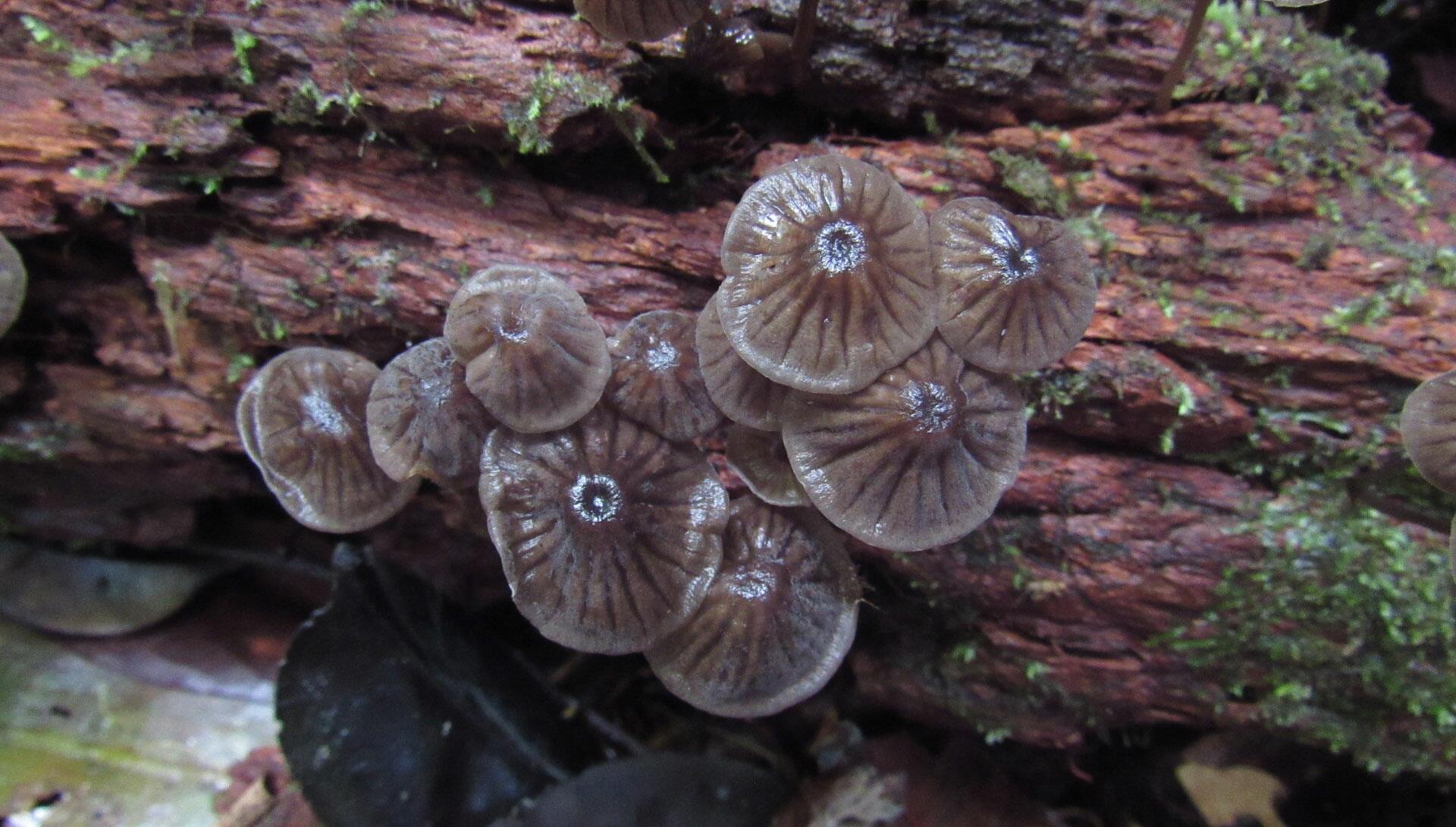
Fungi Mycena cristinae. Photo: Julia Simons
Fungi – unnamed
As yet unknown and unnamed Amazon fungal species that is impacted by deforestation
My name is Noemia Ishikawa, and I’m a mycologist at the National Institute for Amazon Research. I’m lending my voice to the still unknown fungal species of the Amazon. It is believed that we have so far identified only 10% of the types of fungus on the planet, and that a large part of the as yet uncatalogued 90% are to be found in the Amazon. On their behalf, I would like to ask Lula to put an end to the destruction of the forest, which may be decimating beings we don’t yet know about. And to invest in science, so we can make progress in discovering these species.
Fungi, which have been evolving for over one billion years, are extremely important organisms that produce hundreds of thousands of compounds used to treat a wide range of diseases. Just one of these, penicillin, increased the average human lifespan by 23 years. They are essential for the forest, as they cycle nutrients, and are food for insects, arthropods, humans and other organisms. Fungi are found inside trees, defending them and keeping them healthy. They are also essential for plant nutrition and communication in the nutrient-poor Amazonian soil. Without their silent, discreet work, the forest would not be as lush as it is. They come in a variety of colors, sizes and shapes, and possess a range of breeding strategies. I’d like to tell president-elect Lula that fungi are nature’s works of art.
When we see pictures of the fires in the Amazon, we feel sorry for the trees and animals that die, but no one gets upset about the potential harm to mushroom species, even though an incalculable number are lost in a single forest fire. Studies estimate there are currently 3.8 million species of fungi on the planet, and we only know of a small number of these. These new species are most likely to be found here in the Amazon, and dozens can be observed in just a small patch of forest. In the last ten years alone, our team has published reports of 30 new species, and is currently researching 20 others. But this is a tiny number compared to the millions yet to be discovered. By destroying the forest, we are losing something we don’t yet know exists. Extinguishing lives that have evolved for thousands of years, before we even know of their existence, is an incalculable crime.
In addition to putting an end to the destruction of the forest, the new government needs to place more researchers in the Amazon, who can study and learn about the biodiversity of the region. We need to hire more mycologists, geneticists, ecologists and other scientists trained in Brazil, who are currently leaving the country because they can’t find a job here. We also need greater investment in graduate studies to train more researchers to master and doctorate level. We need more money for expeditions – and more money for research, and to maintain the scientific collections of our institutions. Today, in terms of technology, we are highly dependent on foreign countries for tasks such as molecular and genomic sequencing. President-elect Lula, I ask, on behalf of both the known and the unknown fungi, that you ensure Brazilian scientists are given the autonomy to carry out research on the Amazon, in the Amazon.
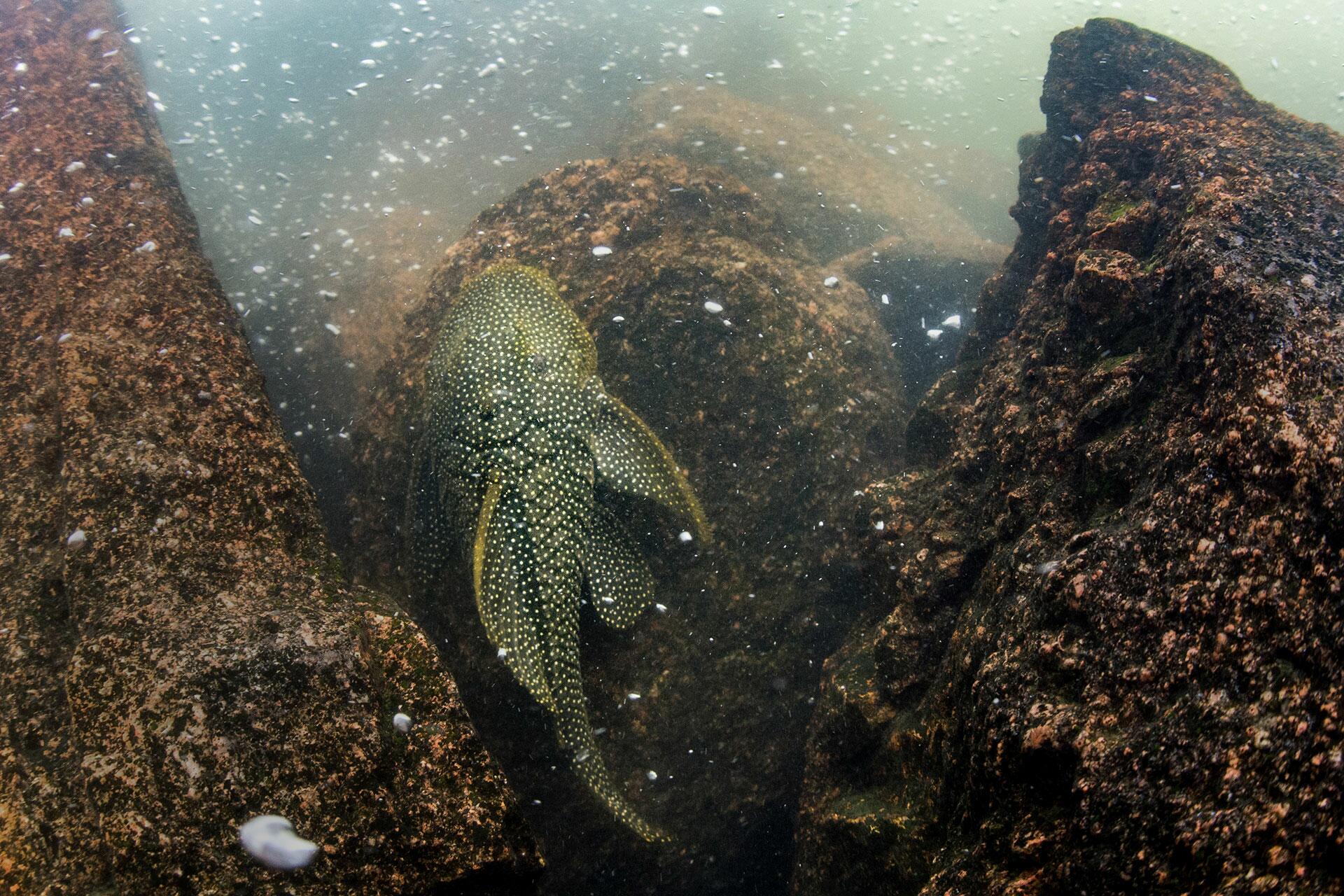
Acari-amarelo: the gold nugget pleco fish. Foto: Leandro Sousa
Fish – Gold nugget pleco and zebra pleco
Two marine species affected by the Belo Monte Hydroelectric Plant on the Xingu River in Pará
I’m Jansen Zuanon, a biologist specializing in Amazon fish ecology, and I’m here representing the acari-amarelo (gold nugget pleco). The young of this fish have striking brilliant yellow edging on their fins, and spots all over their bodies. The fish has suffered veritable extermination in part of its habitat, the Volta Grande region on the Xingu River, in the state of Pará, where the Belo Monte Hydroelectric Power Plant has been constructed. I also speak on behalf of the acari-zebra (zebra pleco), a black and white striped fish that only exists in this region and which is at risk of extinction. On behalf of these and other fish affected by Belo Monte, I ask Lula to listen to the scientists, the indigenous populations and the ribeirinhos (members of traditional forest communities, who live in close relationship with the rivers of the Amazon) so a suitable habitat for these non-humans can continue to exist, and so destructive projects like Belo Monte are never developed in the Amazon again.
The construction of Belo Monte has meant that large sections of the Xingu River rapids, where these fish live, were permanently flooded by the reservoir of the plant. The water then began to flow more slowly in these areas, and, as a result, finer sediments, which would previously have been carried away by the current, now accumulate on the rocks, suffocating the algae and the small animals that serve as food for the fish, and burying the burrows where they make their homes and go to spawn.
This slower current has also made the water temperature rise, and its oxygen levels decrease, causing terrible harm to these yellow fish, also known as cascudinhos, which depend on fast flowing water with plenty of oxygen. Without this, they get sick. On a recent research trip in Volta Grande do Xingu (the Great Bend of the Xingu), I witnessed a terrible scene. The gold nugget plecos were dying in droves on the riverbanks, their eyes and bellies sunken, missing teeth, full of parasites and with their fins rotting. It was an agonizing, tortured death.
In the part of the river from where the water is diverted into the Belo Monte turbines, unpredictable variations in water levels are severely harming the fish. How much water reaches the river is now determined by the spillway, which serves as the tap of the dam, and the needs of the plant, rather than by the human and non-human people who inhabit Volta Grande do Xingu. When the demand for electricity decreases, the plant rapidly releases a large amount of water. And when more energy is required, Belo Monte swallows huge volumes of water from the river. The lack of rhythm or temporality is disastrous for these fish, which, having evolved in a predictable system over millennia, depend on these signals from nature.
The start of the inundation tells the fish it is time to reproduce, and the rising water levels flood the igapós, or swamp-forest areas, where they feed and grow. But now there’s flooding followed by draining, flooding followed by draining, which confuses the fish. Sebastião Bezerra Lima, who lives on Ilha do Amor island and is a participating researcher in the Volta Grande do Xingu Independent Territorial Environmental Monitoring Group, says the fish have become illiterate in the river, and no longer know how to react. They live in a situation of permanent stress. The sudden low water levels also make the zebra pleco, much sought after by the illegal ornamental fish industry, easy prey.
With nowhere to escape to, the fish are easily captured, taken from the Xingu to the border with Colombia, then smuggled to other countries. Curimata and pacu, important fish species in the region, have also suffered enormously. Their numbers have decreased, putting the human populations of the traditional communities of Volta Grande at risk of food insecurity. There are shortages of fish on the dinner tables and in the street markets of the region.
The flood pulse of the river needs to return to how it was. Completely reversing the impact of the diversion of water by the plant is impossible, as it would mean depriving the turbines of water, halting the generation of electricity. But the effects can be reduced, by ensuring the division of water between Volta Grande do Xingu and the hydroelectric plant allows the cycles of flood and ebb to regain their natural timing and duration. This would mean there is enough water to flood the igapós where the fish spawn and feed, increasing their chances of continuing to exist, reproduce, and live. We have a clear proposal for how to do this, the government just needs to listen. Lula must talk to the scientists.
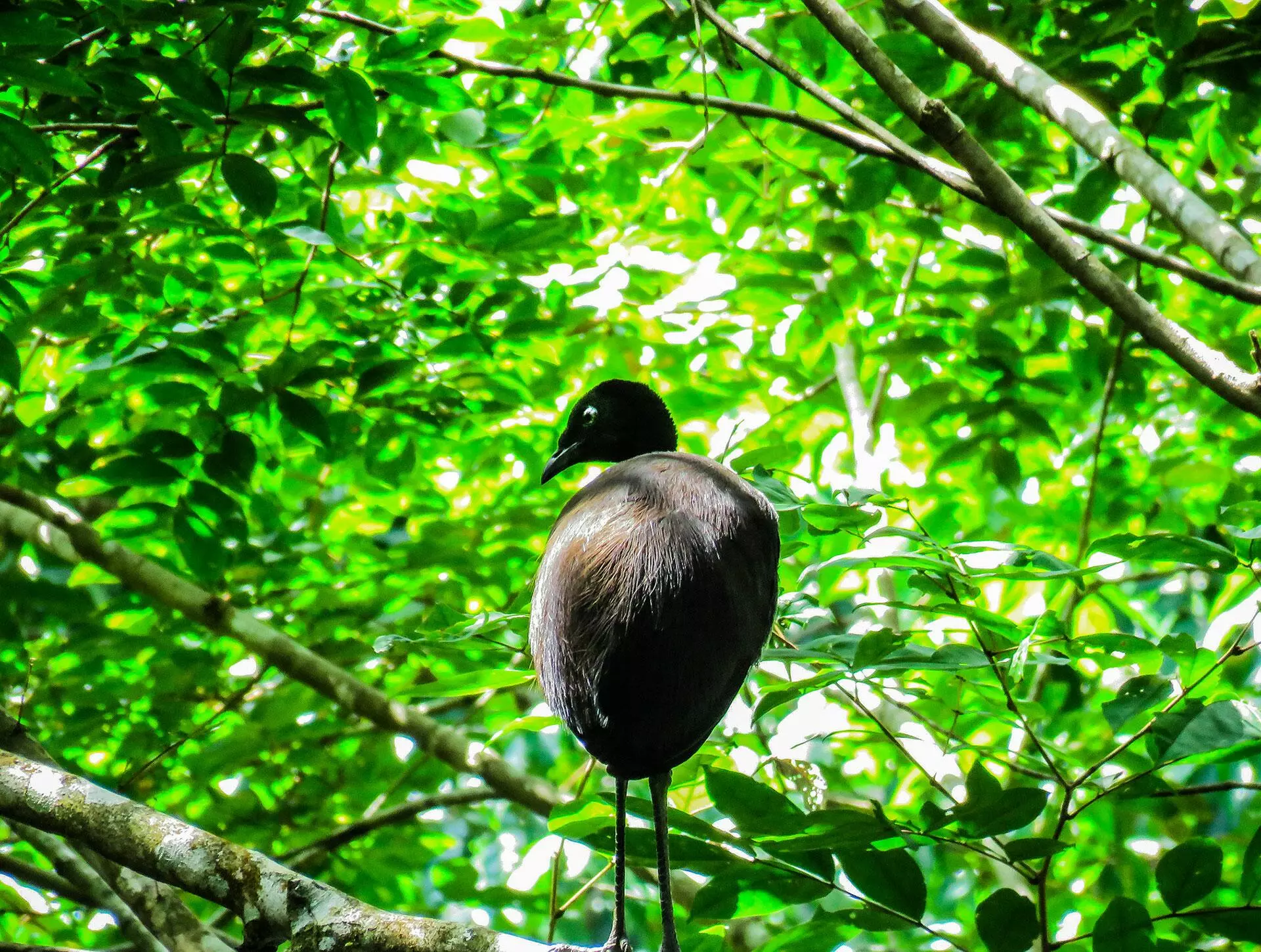
Dark-winged trumpeter. Photo: Pilar Louisy Maia Braga
Bird – Dark-winged trumpeter
A highly endangered Amazonian genus that is threatened by forest loss
My name is Camila Ribas, and I’m a researcher at the National Institute for Amazon Research, where I study the biogeography of Amazonian birds. I’m here to represent Psophia obscura, or the dark-winged trumpeter, which lives in only one region of the Amazon, between the states of Pará and Maranhão. Its home is located in the arc of deforestation, the area most affected by the destruction of the forest. It is vital that president-elect Lula knows the bird soon will not have an environment to live in. I’m asking, on its behalf, that the felling of trees and the fires in the region stop immediately. If we destroy another inch of forest it will become extinct.
Trumpeters are a genus of large birds that mainly travel on the ground. They’re highly characteristic of the Amazon and only exist in this region. Each species of trumpeter lives in an endemic area, which is what we call a region which is home to a species which is restricted to that area and does not naturally occur anywhere else in the world. They live in areas crossed by rivers, and a different species of trumpeter lives in each region of solid ground between the rivers, known as interfluves. They only inhabit the closed forest, and avoid open grasslands. This is why you won’t find more than one species of trumpeter in an interfluve, because each has its own region. It’s like they’re cities, with the rivers as limits. Each trumpeter lives in one city and only in that city. That is its endemic area.
The dark-winged trumpeter lives in the so-called Belém Endemism Center, the area most affected by the destruction of the forest. A recent study pointed out 76% of the area has already been deforested. This bird is highly dependent on the health of the forest. When it is cleared and converted into open land, these non-human people become easy prey, as they’re unable to protect themselves from predators. They also suffer from a lack of food, as they feed on fruit that falls from taller trees. They need large areas in which to look for food in different seasons. If the forest is fragmented, and cut up by deforestation, they can’t leave their fragment because they can’t walk in open areas. So they’re confined, and have no access to food. They nest in hollow trees and, as they’re large, they need large trees. When all this is absent, the trumpeter also starts to disappear.
For many people, the Amazon is like a big green ball. We talk about how big it is, and how 80% of it is preserved, and how we’re supposedly taking good care of it, like these terrible ministers of the environment in the Bolsonaro government claim. But the trumpeters show us this isn’t true, and that different parts of the Amazon are evolving in different and independent ways. The destroyed fifth is concentrated in areas where there are unique species that may be lost forever. Psophia obscura is a large animal, which we understand relatively well, but it represents several other beings that may be unique to an area and which are being destroyed along with it, which we cannot even see.
I want to tell Lula we have to stop deforestation in this region of the Belém Endemism Center. We can’t deforest another inch because there’s almost no forest left. Psophia obscura is very sensitive and is already under extreme threat. It needs its remaining environments to be maintained and corridors to be created between them. The dark-winged trumpeter not only needs zero deforestation, it needs the forest to be restored, so that it can grow back and once again provide a good home for this bird to live in.
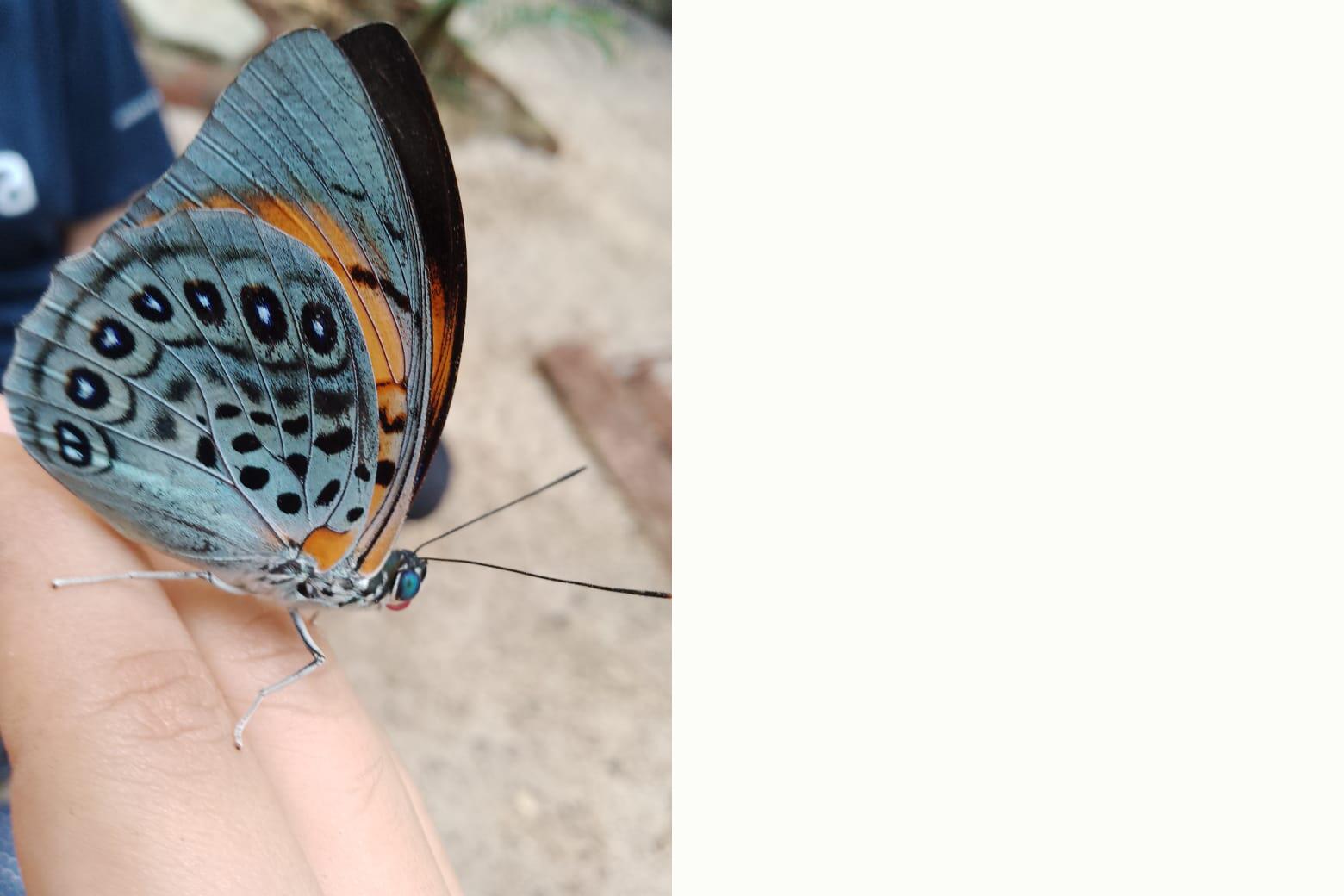
‘Prepona narcissus’. Photo: Raymê Carvalho
Butterfly – Prepona narcissus
A brightly coloured Amazonian insect affected by fire and ash
My name is Ricardo Spaniol, and I’m a biologist, researcher and author of a study entitled Decoloring the Amazon: how deforestation affects butterfly coloration. I’m representing Prepona narcissus, a majestic species of butterfly from the Amazon, identifiable by the metallic-blue and red color of its wings, and the incredible tropical orange of part of its abdomen. It lives in the canopy of the tallest trees in the forest, and, like a huge number of the Amazon’s brightly colored butterflies, it is at risk of disappearing.
Our study, published in 2020, found that deforestation is wiping out diversity and eradicating colors, creating a wasteland dominated by brown and gray butterflies, which camouflage themselves in the degraded or destroyed forest. Attracting attention becomes a disadvantage. Colors can make butterflies easy prey, so they soon either die or migrate to other locations.
Many of these butterflies are endemic, meaning they only occur in this geographic region, and nowhere else in the world. When we destroy more and more of the region in which they exist, they have nowhere to take refuge, and may become extinct forever. If this happens, this population will be beyond rescue. The beautiful Prepona narcissus is on the Red List of Threatened Brazilian Fauna, a seven-volume collection published by the Chico Mendes Institute for Biodiversity Conservation in 2018.
Therefore, on behalf of this and the other brightly colored butterflies of the Amazon, I demand that the Lula government immediately strengthens Brazil’s environmental authorities, so we can reverse the increases in deforestation and forest fires. During our research we noticed that, as the forest regenerates, the colored butterflies gradually return, and a similar pattern to that of a conserved forest is re-established. These are butterfly species that have found shelter in nearby forest remnants not affected by deforestation or fires, and which return and repopulate the areas undergoing recovery.
Therefore, the new government needs to implement forest restoration projects, so we will have a chance of salvaging the diversity of butterflies in destroyed spaces. We have the tools and technology to recover large areas of forest. Greater investment in science and technology is also essential.
Finally, the government must help people learn about the Amazon, and make them aware that lives like that of the magnificent Prepona Narcissus exist. It’s hard for people to take care of, or preserve something they don’t know about, or for which they feel neither affection nor curiosity. It is vital that, through education, as many Brazilians as possible understand what really happens in the forest.
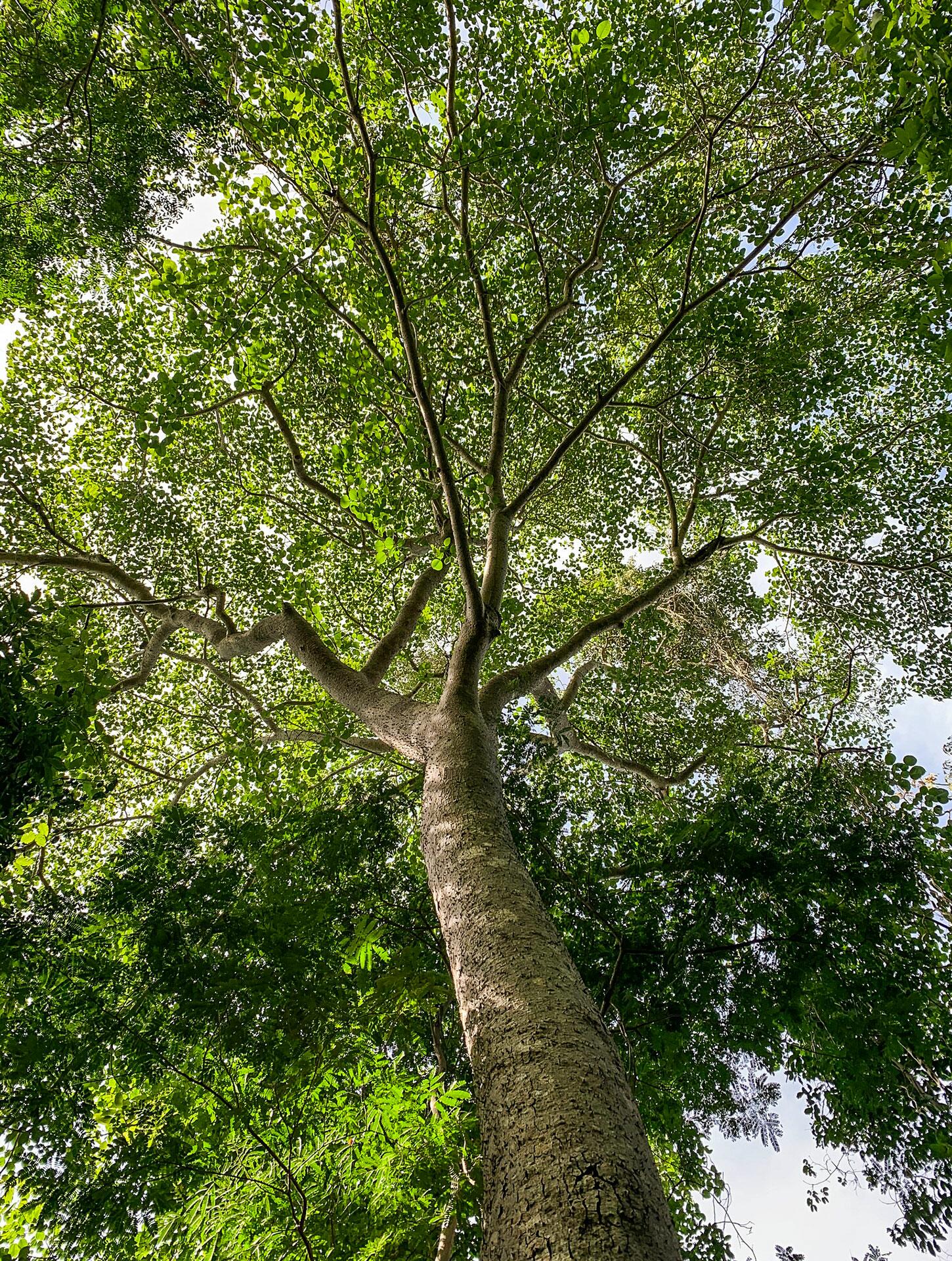
By law, the sandtree can’t be cut down anymore, but the law isn’t enforced. And so the species is coming to an end. Photo: ddavilareyes
Tree – Sandbox, the tree of the riverside dwellers
I’m Marta Regina Pereira, a specialist in botany and a professor at Amazonas State University. I’m lending my voice to the sandbox tree, or Hura crepitans, a tree of the Euphorbiaceae family typical of the Amazon region. As its wood is very light and buoyant it is used in the construction of floating houses, and buildings are made from it in every ribeirinho (traditional forest peoples who live in close relationship with the rivers of the Amazon) community. It is also used to build tourist boats and floating hotels, which have become fashionable in recent years. But the lack of control over its extraction, combined with high rates of deforestation, mean it has practically disappeared from the forest. To save it, I implore president-elect Lula to invest in environmental education, and urgent actions to contain deforestation.
The sandbox tree was the first plant that caught my attention when I came to work in the Amazon in 2012. I went to lunch with a colleague and saw a boat pulling a huge log. He told me what it was and explained how common its use is in communities here. After that I started to notice the trees when I went into rural areas, where I often go to teach through the university. I developed a special affection for the tree. But in recent years, my students have told me they can no longer find it to make their floating houses. When they find an adult tree, it’s a cause for celebration.
When we have to search hard to find something which should be plentiful, it’s time to worry. The sandbox tree is being used a great deal, not only by ribeirinhos, but also by owners of tourist boats and big businesses. By law, the tree can’t be cut down anymore, but the law isn’t enforced. There is no management, the tree isn’t cultivated, and it grows slowly. As a result, the sandbox tree hasn’t been able to regenerate, or grow into an adult. It is killed at a very young age. And so the species is coming to an end.
The sandbox tree, in addition to inhabiting the mainland, also lives in the igapós, areas of forest flooded by blackwater rivers, and in the floodplains of the whitewater rivers. Due to the climate catastrophe, there are years when we have long droughts and others with great flooding. These trees, despite having adapted to these areas of flooding, cannot survive. They are used to a flood period of four or five months, but now they are underwater for eight or nine months. This causes nutritional harm to the sandbox tree, and it dies. The impact of the climate crisis combines with deforestation to make the tree’s existence difficult, as all the native biomass above ground is uprooted – the entire forest, in other words. The sandbox tree, a person rarely found in many areas, goes with it.
A tree like this, which grows to 100 or 160 feet and has a majestic canopy, is fed on by millions of fungi, bacteria and birds, as well as bats. There is an entire ecosystem working in its body. The loss of each sandbox tree is a catastrophe and can lead to the disappearance of other species we didn’t even know existed, and which depend on it alone. In nature, everything is interconnected.
I want to tell president-elect Lula that to save the sandbox tree, we need to study it further, to understand more about how it interacts with the environment and other living beings. We need to increase environmental education projects in rural areas, and also educate business owners, to replace its use in floating constructions. Deforestation in the Amazon needs to stop now. We are extremely close to the point of no return for the forest, and for so many species that comprise it. We have to start reforesting now.
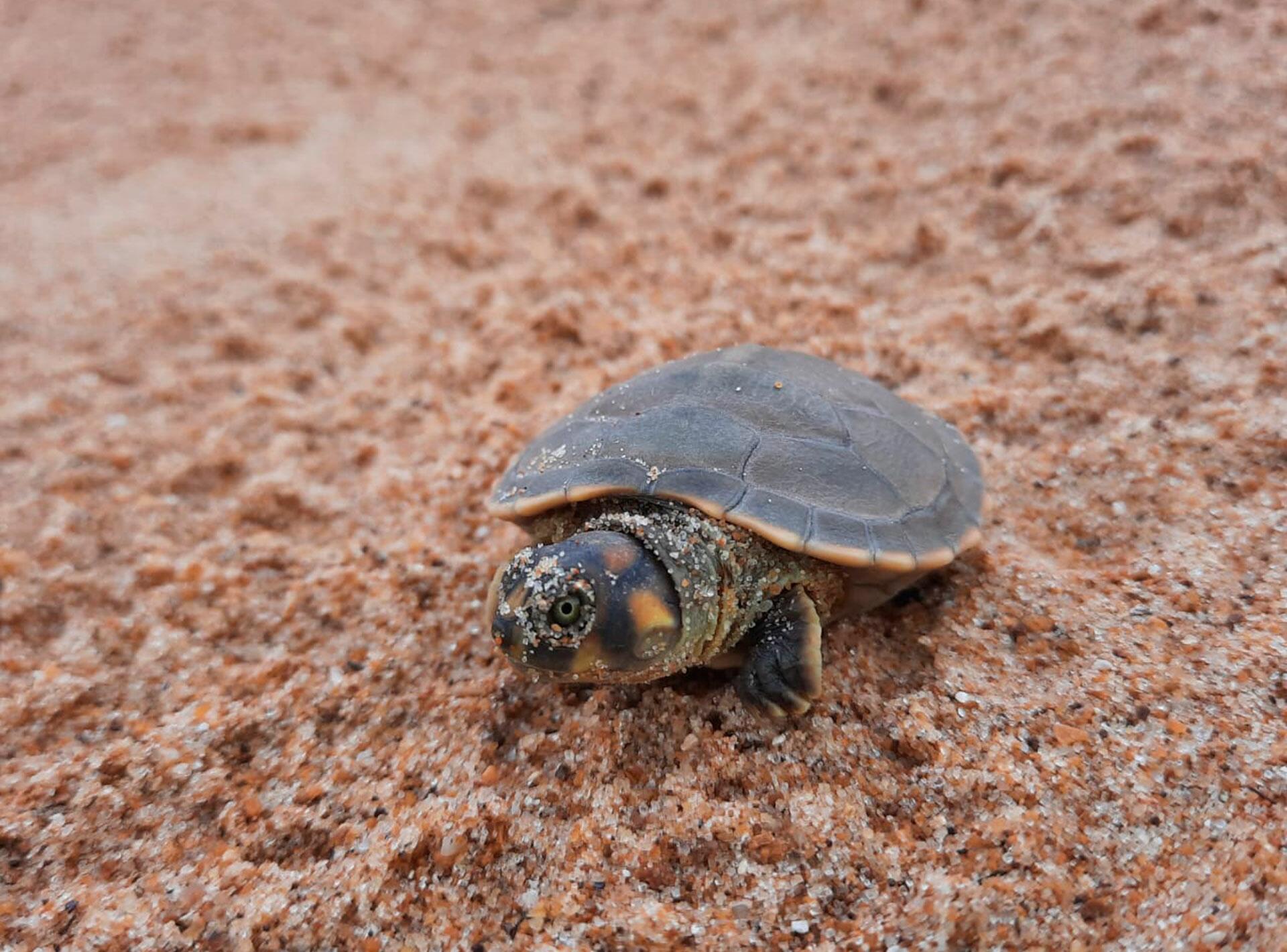
The yellow-spotted river turtle. Photo: Josiel Juruna
Reptile – Yellow-spotted river turtle
I’m Cristiane Costa Carneiro, a biologist and researcher in aquatic ecology and fishing. I’m part of the network of researchers at the Volta Grande do Xingu Observatory, which is in a region put at risk by the construction of the Belo Monte Hydroelectric Power Plant. I speak here on behalf of the yellow-spotted river turtle, a species of chelonian greatly harmed by the construction of dams on the rivers of the Amazon. I have a message for president-elect Lula in the name of the turtle: it is time for Brazil to rethink its energy matrix, and to alter the hydrograph of Belo Monte, which is currently diverting 80% of the water from the Xingu River in the Volta Grande region to the plant’s turbines. Studies by renowned scientists have already proven that life cannot be sustained like this.
Large hydroelectric dams in the Amazon seriously harm aquatic fauna, with turtles among the most affected groups. I have been working in the Belo Monte region since 2007, but the problems extend to the São Manoel and Teles Pires hydroelectric plants, on the Teles Pires River, the Jirau and Santo Antônio plant, on the Madeira River, as well as the Tucuruí Dam, on the Tocantins River.
The construction of reservoirs destroys many of the feeding and reproduction areas of the turtles. In the case of Belo Monte, the water diverted for the production of energy comes from the Volta Grande (Great Bend) do Xingu, a stretch of more than 100 kilometers of river. This diversion jeopardizes the flooding of alluvial forests (areas that fill with water during the rains of the Amazon winter). Turtles would spend the entire winter in these areas, which, since the hydroelectric plant began to operate, have dried up. These forests also acted as feeding areas, as they contain large amounts of fruits, seeds and leaves, which would allow the turtles to fatten up, guaranteeing an energy reserve so they could survive in the summer dry period, when they are confined to the main channel of the river, where there is little food available. Today so much water is taken for the turbines on the Volta Grande do Xingu that the alluvial forests no longer flood. The yellow-spotted river turtles can’t find enough food to survive. And the less they eat, the fewer eggs they lay.
The alluvial forest is also important for animals to protect themselves from large-scale fishing. Yellow-spotted river turtles are widely consumed in the towns and cities of the region, despite the fact that their capture is illegal. Without flooding, they are no longer able to take refuge within the alluvial areas of the forest, and are confined to the main channels of the river, where they become easy prey. This used to happen only in the second half of the year, during the dry period. But now they are hunted all year round, which leads to overfishing of the species.
The Tabuleiro do Embaubal, one of the largest nesting sites for turtles on the Xingu River, is also under threat. A study has shown the dam constructed for the plant retains sand previously carried along the river, which formed beaches where turtles laid their eggs. This could lead to the loss of one of the most important breeding grounds for these species.
Such impacts are repeated at all the hydroelectric dams in the Amazon. The plants on the Teles Pires River did not even carry out detailed studies of the chelonian population in the region, and there are no specific monitoring programs. For Belo Monte, the monitoring situation is a little better, as several conditions were agreed with environmental agencies to mitigate the impacts of the construction of the plant. But some have not been fulfilled.
The Lula government must respect the studies produced by academia and the technical opinion reports of the Brazilian Institute for the Environment and Renewable Natural Resources. And it must ensure all the conditions for the construction of Belo Monte are fulfilled, as the operational requirements of the plant are far from being completely met seven years after it became active. Inspection in the region needs to be structured so that institutions can perform their roles properly.
Brazil also needs to rethink its energy matrix. Reservoirs produce methane gas, which contributes to the greenhouse effect and the climate emergency. Turtles are greatly affected by this change in climate as their sex is determined by the incubation temperature of their eggs. Scientific research undertaken at the Tabuleiro do Embaubal showed only females are born in very hot years. Sometimes, the temperature in the nest becomes so hot it is lethal for the embryo, which fails to develop. In years of major flooding, also caused by climate change, the nests are flooded too. President-elect Lula must realize we are reaching an irreversible point.
Apuração e depoimentos: Talita Bedinelli
Translated by James Young





